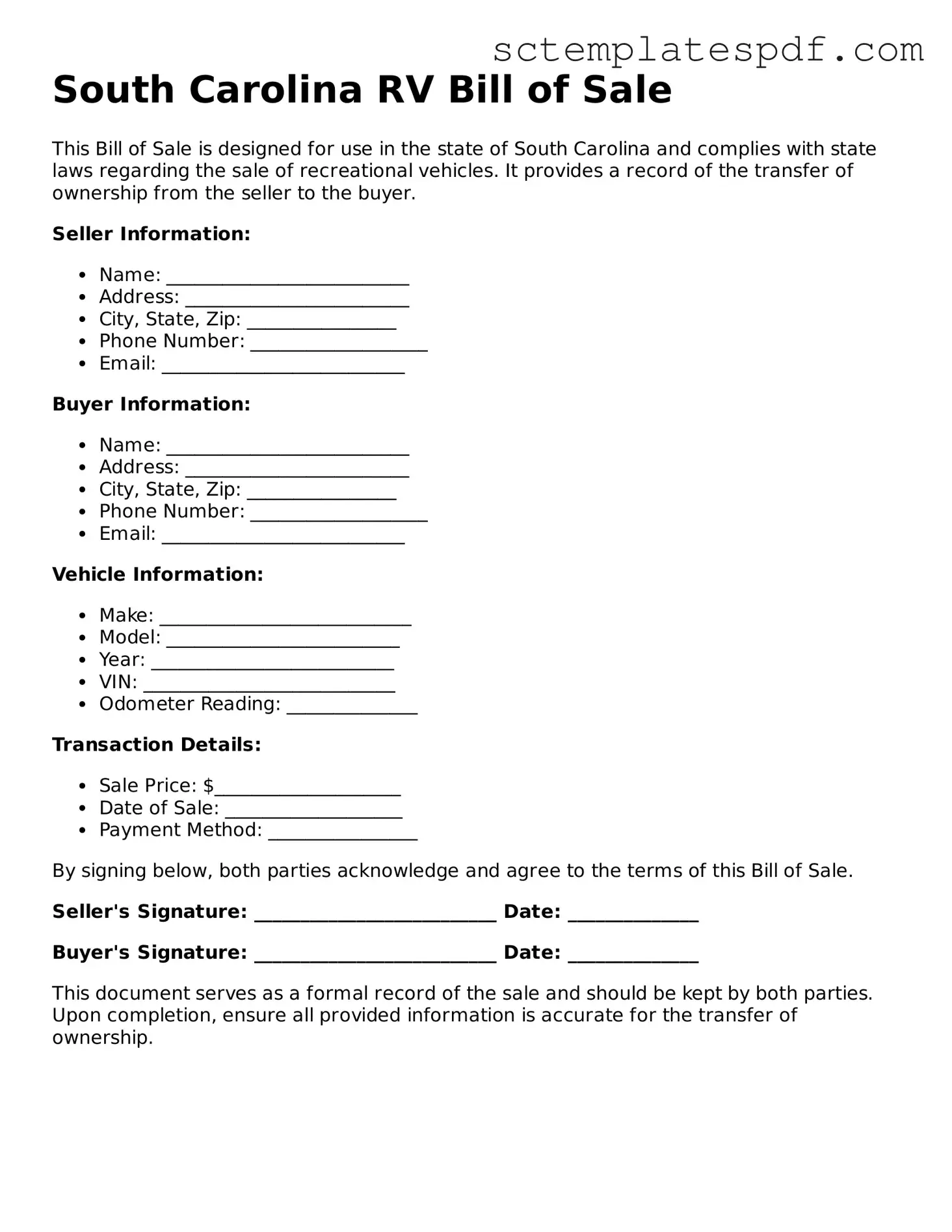When it comes to buying or selling a recreational vehicle (RV) in South Carolina, having the right documentation is essential for a smooth transaction. The RV Bill of Sale form serves as a crucial legal document that outlines the details of the sale, protecting both the buyer and the seller. This form typically includes important information such as the names and addresses of both parties, a detailed description of the RV, including its make, model, year, and Vehicle Identification Number (VIN). Additionally, the purchase price and any terms of the sale are clearly stated, ensuring that both parties are on the same page. Signatures from both the buyer and seller are required to validate the agreement, making it a binding contract. Having this form completed accurately not only facilitates the transfer of ownership but also helps in future registration and titling processes with the South Carolina Department of Motor Vehicles. Understanding the significance of this document can greatly enhance the overall experience of RV ownership in the Palmetto State.
